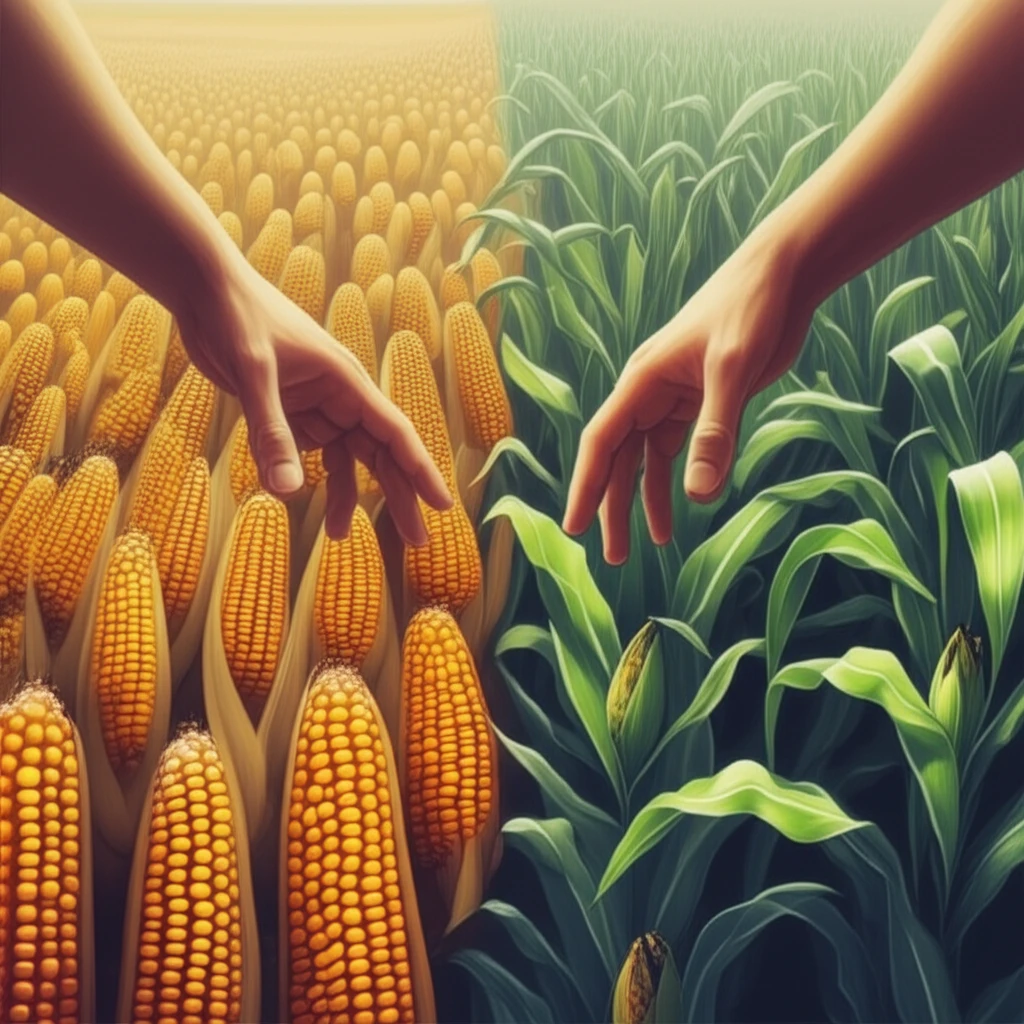
Sweet or Green? Unlocking the Secrets to Perfect Corn on the Cob
"A sensory exploration of sweet corn and green corn hybrids reveals the optimal harvest window for peak flavor and texture."
For corn lovers, the debate between sweet corn and green corn is more than just a matter of taste. The chemical composition and texture of corn kernels directly influence how much we enjoy it. That's why understanding the best time to harvest different types of corn is key to unlocking their full potential.
A recent study delved into the sensory characteristics of both sweet corn hybrids and green corn hybrids, exploring how different harvest intervals affect consumer acceptance. The goal was to pinpoint the sweet spot for harvesting, ensuring the most delightful eating experience.
This article explores the findings of this research, providing practical insights for farmers, producers, and anyone who wants to savor corn at its finest. We'll break down the science behind the flavor and texture, revealing the optimal harvest window for each type of corn.
The Science of Sweetness: Harvest Timing and Sensory Qualities

The study, conducted at the Experimental Research Station of Syngenta Seeds Ltda in Uberlândia, MG, Brazil, focused on eight different corn hybrids: six sweet corn (SWC03, SWC04, SWC05, SWC06, SWC07, SWC08) and two green corn (SWC01, SWC02). These hybrids were harvested at four different intervals – 26, 28, 30, and 32 days after flowering (DAF) – to assess the impact on sensory characteristics.
- Sweet Corn vs. Green Corn: Sweet corn hybrids generally enjoyed greater acceptance than green corn hybrids, regardless of the harvest interval. This highlights the inherent preference for the sweeter taste profile in the tested population.
- The Ideal Harvest Window: For all hybrids, harvesting between 26 and 28 DAF resulted in the best sensory results, maximizing flavor, texture, and color appeal.
- Late Harvest Drawbacks: Delaying harvest to 32 DAF led to a decline in the acceptability of sweet corn, making it more similar to green corn in terms of taste and texture. This suggests that the sugars in sweet corn convert to starch as it matures, diminishing its desirable sweetness.
From Field to Table: Maximizing Corn's Potential
The study's insights have practical implications for the corn industry. By understanding the optimal harvest window for different hybrids, producers can ensure that their corn reaches consumers at its peak flavor and texture.
Furthermore, the research highlights the importance of considering consumer preferences when developing new corn varieties. Breeders can focus on enhancing the desirable characteristics of sweet corn, such as its sweetness and tenderness, to meet market demands.
Ultimately, this research contributes to a greater appreciation for the science behind our food. By understanding the factors that influence taste and texture, we can make informed choices about the foods we eat and support sustainable agricultural practices that prioritize quality and flavor.
